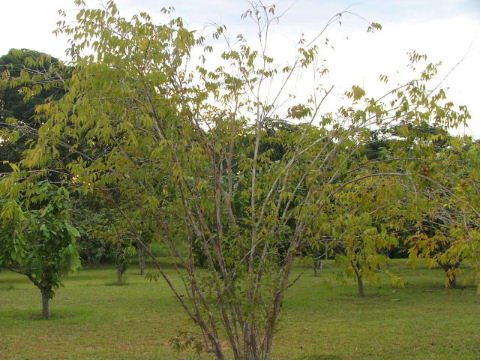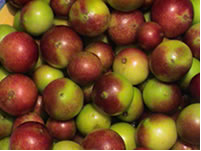Go with the flow
Camu camu
thrives in riverbanks in the Amazon rainforest, but this
tropical plant can be adapted to hot subtropical climates.
People have tried to move this plant on drier land for
greater production. Research is being done on
the possibility of cultivating Camu camu because the species has
never been domesticated. Harvesting is
difficult and time-consuming so researchers are trying to adapt
the Camu camu tree to upland areas and initial results are
encouraging.
Scientists worked with different kinds of fruits in the same
family in order to obtain rootstocks of this family adapted to
dry land for vegetative propagation of Camu camu (only camu-camu
rootstocks showed compatibility). So there is
definitely progress in producing Camu camu trees in greater
amounts and soon this tree will have adapted to a slightly
different environment.
The atmosphere, location, and maturation
all affect Camu camu and its chemical compostion.
In regions of higher temperatures and light exposure,
carotenoids (organic pigments that absorb light energy for use
in photosynthesis) are significantly higher in the fruit.
In addition, a mature ripe fruit is more acidic and has
less ascorbic acid (Vitamin C) compared to a mid-ripe fruit.
Like most plants, Camu camu has many
specialized structures that help it function and strive in the
rainforest. It has roots to aid in the uptake
of water and nutrients, stems to transport the water and
nutrients to the leaves and fruit, leaves to increase surface
area for photosynthesis, and fruit to store, protect, and help
disperse seeds.
